- Why Plant Red Tomatoes?
- Taste
- Health Benefits
- Versatility
- Garden Beauty
- Easy to Grow
- Benefits of Growing Red Tomatoes
- 1. Health Benefits
- 2. Versatility in Cooking
- 3. Fresh and Delicious Flavor
- 4. Cost Savings
- 5. Educational Experience
- 6. Stress Relief and Satisfaction
- 7. Environmental Benefits
- Choosing the Best Varieties
- 1. Beefsteak Tomatoes
- 2. Cherry Tomatoes
- 3. Roma Tomatoes
- Large Red Tomatoes
- 1. Beefsteak Tomatoes
- 2. Heirloom Tomatoes
- 3. Celebrity Tomatoes
- Tiny Red Tomatoes
- 1. Cherry Tomatoes
- 2. Grape Tomatoes
- 3. Plum Tomatoes
- Planting and Caring Tips
- 1. Soil Preparation
- 2. Planting
- 3. Watering
- 4. Fertilizing
- 5. Support and Pruning
- 6. Pest and Disease Control
- 7. Harvesting
- Planting Red Tomatoes in the Garden
- Choosing the Best Tomato Varieties
- Preparing the Soil
- Planting the Tomato Seedlings
- Caring for Red Tomato Plants
- Harvesting Red Tomatoes
- Caring for Red Tomatoes
- Watering
- Feeding
- Support
- Pruning
- Pest and Disease Control
- Harvesting and Usage
- Storing Red Tomatoes
- Health Benefits
- How to Harvest Red Tomatoes
- 1. Check the color
- 2. Give them a gentle squeeze
- 3. Twist and pull
- 4. Harvest in the morning
- 5. Handle with care
- 6. Store properly
- “Question-Answer”
- What are the best red tomato varieties to plant?
- Can you give me more details about Beefsteak tomatoes?
- Are Roma tomatoes suitable for making sauces?
- Can Cherry tomatoes be grown in containers?
- Do Beefsteak tomatoes require any special care?
- Are there any specific diseases that Roma tomatoes are resistant to?
- What are some common uses for Cherry tomatoes?
- “Video” If I Could ONLY Grow 7 Tomato VARIETIES for the Rest of My Life, These are My Choices!
Red tomatoes are a staple in many home gardens, offering a burst of flavor and vibrant colors to any dish. Whether you have a large plot of land or just a small patio, there is a delicious variety of red tomatoes that is perfect for your growing space.
If you prefer larger tomatoes, one popular variety to consider is the Beefsteak tomato. These tomatoes can grow up to 2 pounds each, making them perfect for slicing and adding to sandwiches and burgers. Their deep red color and juicy flesh make for a tasty addition to any summer meal.
If you want to try something a bit different, consider planting Cherry tomatoes. These tiny red tomatoes are packed with flavor and are perfect for snacking on straight from the vine. They are also great for adding to salads or roasting for a burst of sweetness.
Another great option for small spaces is the Roma tomato. These pear-shaped tomatoes are known for their rich, meaty flavor and low water content, which makes them ideal for making sauces and canning. Their vibrant red color and firm texture make them a favorite among home gardeners.
Why Plant Red Tomatoes?
Red tomatoes are a popular choice for many gardeners for several reasons. Here are a few reasons why you should consider planting red tomatoes:
Taste
Red tomatoes are known for their delicious taste. They have a sweet and tangy flavor that is loved by both kids and adults. Whether you enjoy eating them fresh, using them in salads, or cooking them in sauces, red tomatoes can add a burst of flavor to any dish.
Health Benefits
In addition to their great taste, red tomatoes are also packed with nutrients. They are a rich source of vitamins A and C, as well as antioxidants. These nutrients are essential for maintaining a healthy immune system and promoting overall health.
Versatility
Red tomatoes come in various sizes and shapes, making them versatile in the kitchen. Whether you prefer large beefsteak tomatoes for slicing and grilling, or cherry tomatoes for snacking and adding to pasta dishes, there is a red tomato variety that suits your needs.
Garden Beauty
Planting red tomatoes in your garden not only provides you with delicious fruits, but also adds visual appeal. The vibrant red color of the ripened tomatoes can brighten up your garden and make it more aesthetically pleasing.
Easy to Grow
Red tomatoes are relatively easy to grow, even for beginners. They thrive in warm weather and require regular watering and adequate sunlight. With a little care and attention, you can enjoy a bountiful harvest of red tomatoes.
In conclusion, planting red tomatoes offers a variety of benefits, from their delicious taste and health benefits to their versatility and visual appeal. Whether you are an experienced gardener or just starting out, red tomatoes are a great choice for your garden.
Benefits of Growing Red Tomatoes
Growing red tomatoes in your garden can offer several benefits. Here are some of the main advantages:
1. Health Benefits
Red tomatoes are known to be rich in vitamins A and C, as well as antioxidants. These nutrients can help boost your immune system, promote healthy skin, and improve vision.
2. Versatility in Cooking
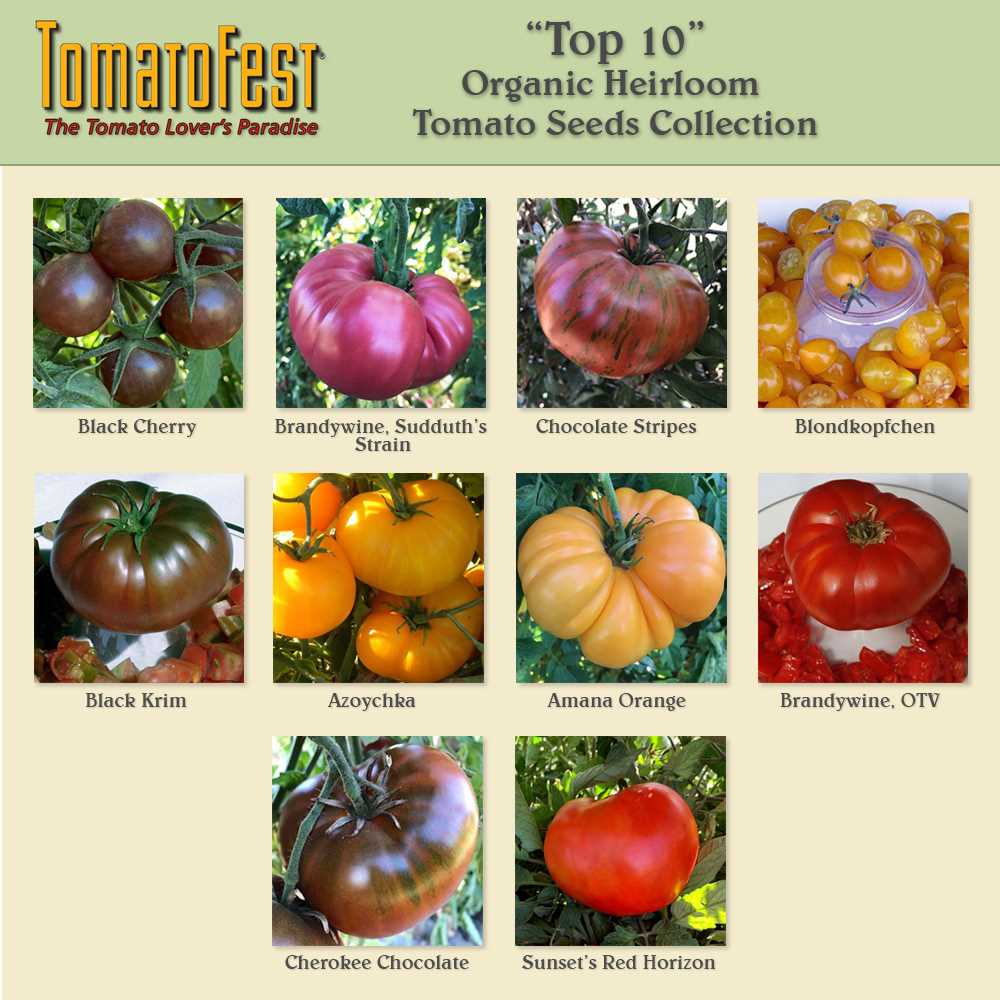
Red tomatoes are incredibly versatile in the kitchen. They can be used in a wide variety of dishes, including salads, sauces, soups, and salsas. Their bright red color adds vibrancy to any meal.
3. Fresh and Delicious Flavor
There’s nothing quite like the taste of a ripe, red tomato picked straight from your own garden. The freshness and flavor will be far superior to store-bought tomatoes.
4. Cost Savings
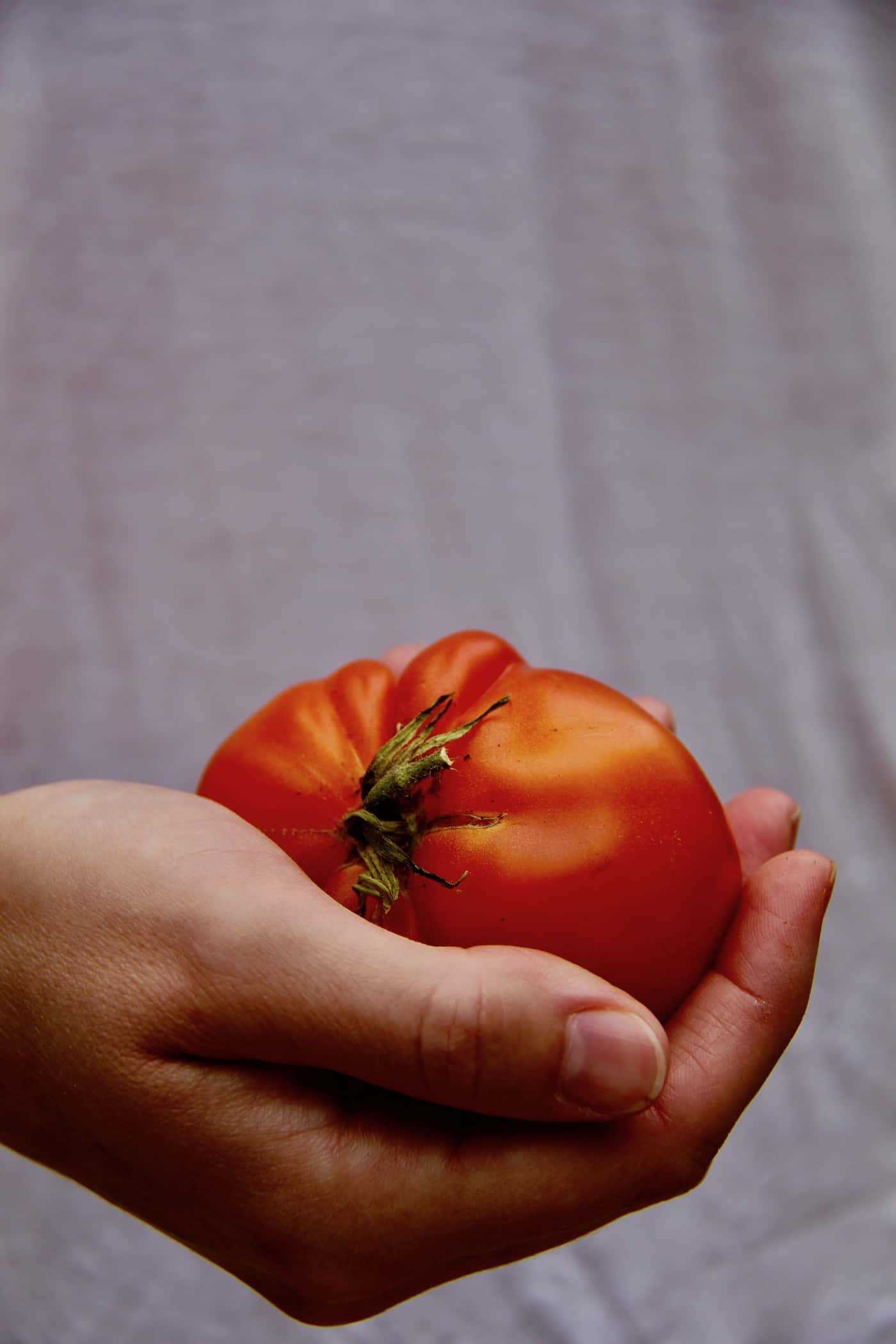
By growing your own red tomatoes, you can save money in the long run. Buying tomatoes from the grocery store can be expensive, especially if you prefer organic options. Growing them at home allows you to enjoy fresh, organic tomatoes for a fraction of the price.
5. Educational Experience
Gardening and growing your own food can be a great learning experience for both children and adults. It provides an opportunity to learn about plant life cycles, the importance of sustainability, and how to take care of living organisms.
6. Stress Relief and Satisfaction
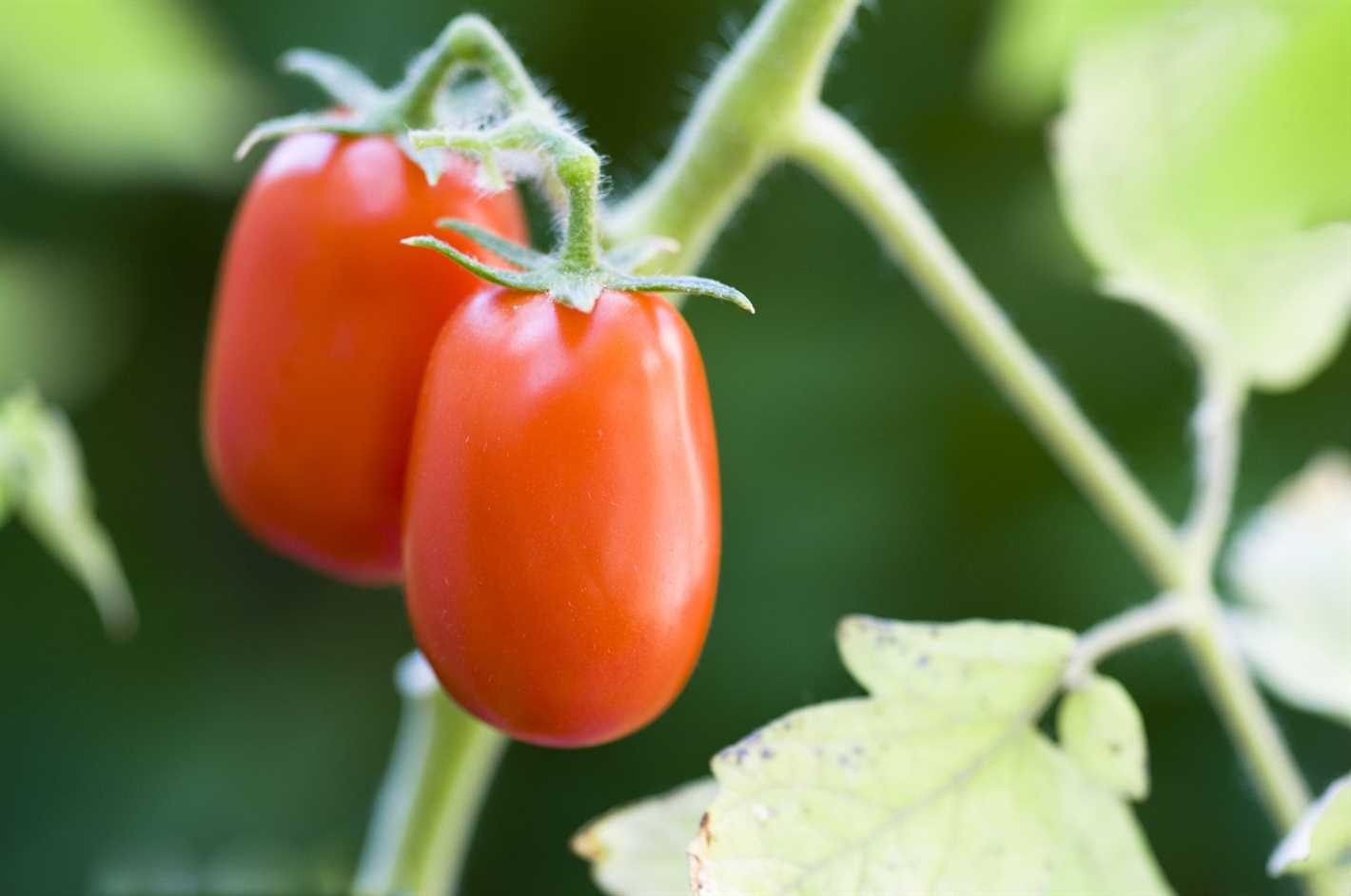
Gardening has been proven to have a positive impact on mental health. The act of caring for plants and watching them grow can be calming and provide a sense of satisfaction and accomplishment.
7. Environmental Benefits
Growing your own red tomatoes reduces your carbon footprint. By avoiding store-bought produce, you can help reduce the energy and resources required for commercial farming, as well as the environmental impact of transportation and packaging.
In conclusion, growing red tomatoes can offer numerous advantages, from improved health and cost savings to educational opportunities and environmental benefits. So why not start planting these delicious fruits in your own garden today?
Choosing the Best Varieties
When it comes to planting red tomatoes, there are numerous delicious varieties to choose from. Here, we will discuss the top three varieties that are known for their flavor, size, and versatility.
1. Beefsteak Tomatoes
Beefsteak tomatoes are a popular choice for those who want large, juicy tomatoes. These tomatoes can grow to be quite hefty, often weighing one pound or more. They have a meaty texture and a sweet, rich flavor that is perfect for slicing and eating raw in sandwiches or salads.
Some popular beefsteak tomato varieties include:
- Brandywine: This heirloom tomato is known for its exceptional flavor and pinkish-red color. It has a sweet, slightly tangy taste and is often used in gourmet dishes.
- Cherokee Purple: Another heirloom variety, Cherokee Purple tomatoes have a unique purplish-brown color. They have a rich, complex flavor that is both sweet and smoky.
- Big Beef: As the name suggests, Big Beef tomatoes are known for their large size. They are resistant to disease and have a balanced flavor, making them a great all-purpose tomato.
2. Cherry Tomatoes
If you prefer bite-sized tomatoes, then cherry tomatoes are the perfect choice. These small tomatoes are typically sweeter than larger varieties and make great additions to salads, pasta dishes, or simply enjoyed as a snack.
Some popular cherry tomato varieties include:
- Sweet 100: These tomatoes are known for their incredible sweetness and high productivity. They have a bright red color and are packed with flavor.
- Sun Gold: Sun Gold cherry tomatoes are a popular choice due to their golden-orange color and tropical-like sweetness. They are a favorite among gardeners for their prolific production.
- Black Cherry: These small, dark-colored tomatoes have a rich, smoky flavor. They are perfect for adding depth to salads or roasting for a savory side dish.
3. Roma Tomatoes
Roma tomatoes are known for their firm flesh and lower water content, making them ideal for sauces, canning, and drying. These tomatoes have a mild flavor and are often used in Italian cuisine.
Some popular Roma tomato varieties include:
- San Marzano: San Marzano tomatoes are considered the gold standard for sauce-making. They have a sweet and tangy flavor and are prized for their low acidity.
- Amish Paste: Amish Paste tomatoes are known for their oblong shape and meaty texture. They have a sweet, rich flavor and are perfect for making salsa or sauces.
- SuperSauce: As the name suggests, SuperSauce tomatoes are great for making large batches of sauce. They have a high yield and are known for their delicious flavor.
Whether you prefer large beefsteak tomatoes, small cherry tomatoes, or versatile Roma tomatoes, these top three varieties are sure to add a burst of flavor to your garden and kitchen.
Large Red Tomatoes
If you’re searching for large red tomatoes to plant in your garden, look no further than these three delicious varieties:
1. Beefsteak Tomatoes
Beefsteak tomatoes are known for their rich flavor and juicy flesh. These tomatoes can grow to massive sizes, with some reaching over a pound in weight. Their large size makes them perfect for slicing and using in sandwiches or salads. Beefsteak tomatoes thrive in sunny locations with well-drained soil. Make sure to stake or cage the plants to support their heavy fruits.
2. Heirloom Tomatoes
Heirloom tomatoes come in various shapes and sizes, but many varieties produce large red fruits. These tomatoes are prized for their unique flavors and historical significance. They offer a burst of juicy sweetness when eaten fresh. Heirloom tomatoes require full sun and well-amended soil to grow successfully. Their large size and vibrant color make them a striking addition to any garden.
3. Celebrity Tomatoes
Celebrity tomatoes are popular for their high yields and exceptional disease resistance. These large red tomatoes are perfect for gardeners looking for a reliable and straightforward variety. They offer a good balance of acidity and sweetness, making them suitable for various culinary uses. Celebrity tomatoes thrive in full sun and well-drained soil. Their large size and superior taste make them a favorite among many gardeners.
When planting large red tomatoes, it’s essential to provide them with proper support and ample space to grow. Regular pruning and feeding can also improve the fruit quality and overall plant health. With these top three varieties, you’ll enjoy a bountiful harvest of delicious and juicy tomatoes throughout the season.
Tiny Red Tomatoes
1. Cherry Tomatoes
Cherry tomatoes are a popular variety of tiny red tomatoes. They are usually round or slightly elongated in shape and have a sweet and juicy flavor. Cherry tomatoes are perfect for snacking and can also be used in salads, pasta dishes, and sauces.
2. Grape Tomatoes
Grape tomatoes are slightly larger than cherry tomatoes but still fall into the category of tiny red tomatoes. They have an oval shape and a slightly thicker skin. Grape tomatoes have a sweet and tangy flavor and are great for adding a burst of color and flavor to salads.
3. Plum Tomatoes
Plum tomatoes, also known as sauce tomatoes or roma tomatoes, are another type of tiny red tomatoes. They have an oblong shape and are known for their rich and meaty texture. Plum tomatoes are perfect for making sauce, salsa, and bruschetta.
When it comes to growing tiny red tomatoes, it’s important to choose a variety that suits your taste preferences and culinary needs. Whether you prefer the sweetness of cherry tomatoes, the tanginess of grape tomatoes, or the richness of plum tomatoes, there is a tiny red tomato variety out there for you.
| Variety | Shape | Flavor | Uses |
|---|---|---|---|
| Cherry tomatoes | Round or slightly elongated | Sweet and juicy | Snacking, salads, pasta dishes, sauces |
| Grape tomatoes | Oval | Sweet and tangy | Salads |
| Plum tomatoes | Oblong | Rich and meaty | Sauce, salsa, bruschetta |
Planting and Caring Tips
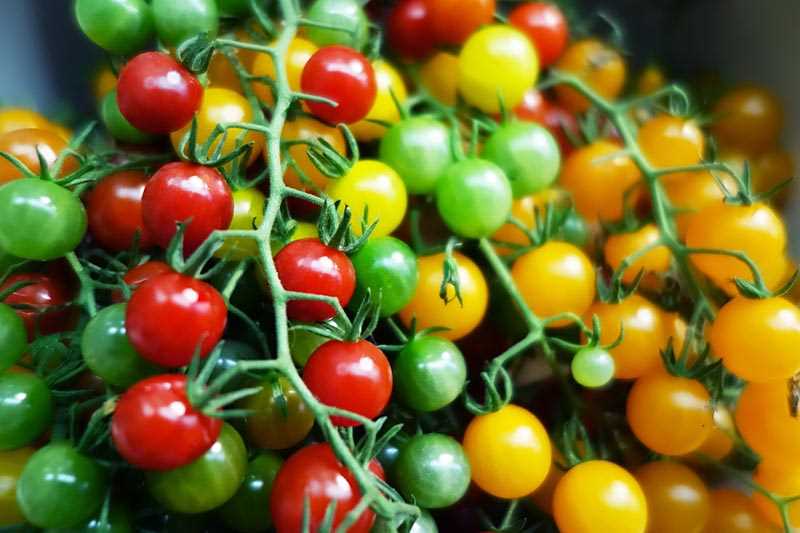
1. Soil Preparation
Before planting your red tomatoes, make sure to prepare the soil properly. Tomatoes prefer well-drained soil with a pH level between 6.0 and 6.8. To ensure good drainage, amend heavy clay soils with organic matter such as compost or aged manure. Remove any weeds or rocks from the planting area, and loosen the soil to a depth of at least 8 inches.
2. Planting
When planting red tomatoes, it’s important to give them enough space to grow. Space the plants at least 24-36 inches apart to allow for proper air circulation and growth. Dig a hole deep enough to accommodate the root ball, and gently remove the plant from its container. Place the tomato plant in the hole, making sure the top of the root ball is level with or slightly above the soil surface. Fill in the hole with soil, firming it gently around the plant.
3. Watering
Tomatoes require regular watering to thrive. Water the plants deeply at least once a week, especially during dry periods. Avoid overhead watering as it can lead to the spread of diseases. Instead, water the plants at the base to provide moisture to the roots. It’s important to maintain consistent moisture levels in the soil, but be careful not to overwater, as this can lead to root rot.
4. Fertilizing
Tomatoes are heavy feeders and require regular fertilization for optimum growth and fruit production. Before planting, mix a slow-release fertilizer into the soil according to the package instructions. Once the plants are established, feed them every 2-3 weeks with a balanced tomato fertilizer. Avoid excessive nitrogen fertilizers, as they can promote leaf growth at the expense of fruit development.
5. Support and Pruning
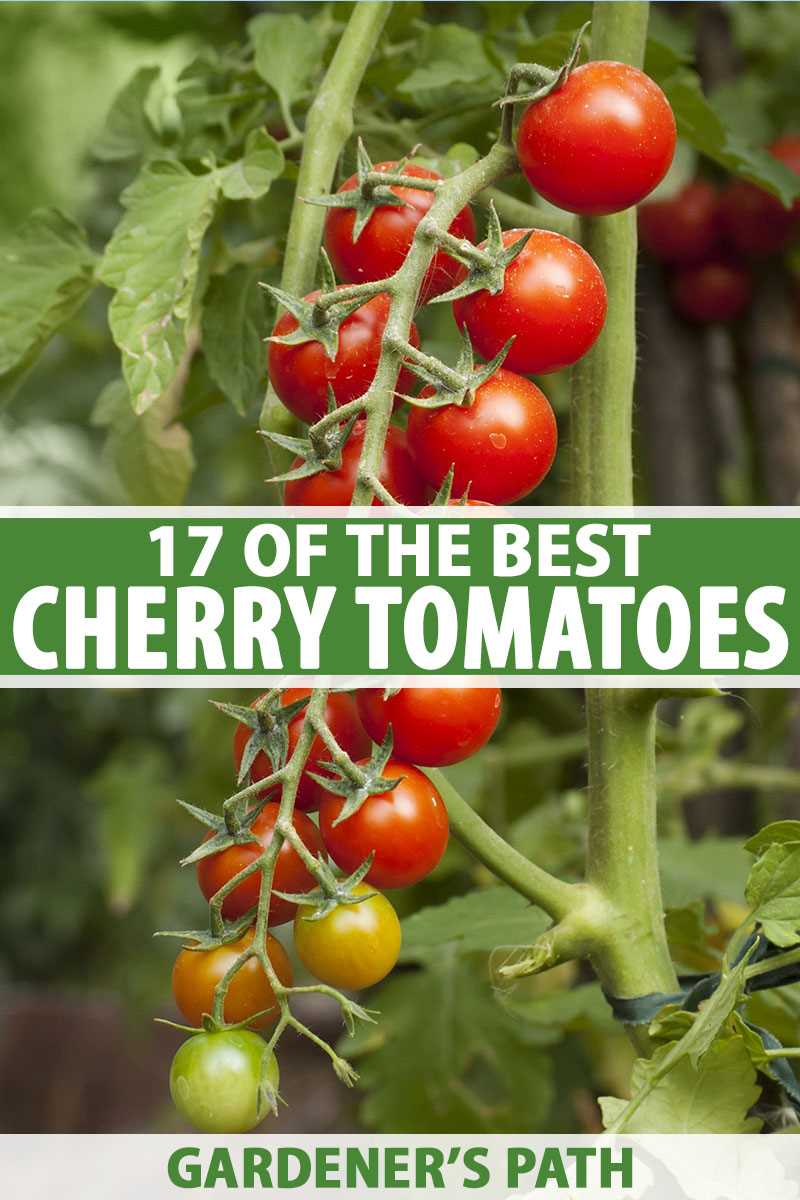
Red tomato varieties often benefit from support to keep the plants upright and prevent damage to the fruit. Use stakes, cages, or trellises to provide support as the plants grow. Additionally, prune the tomato plants by removing the suckers that develop in the leaf axils. This helps to improve air circulation and reduces the risk of diseases.
6. Pest and Disease Control
Red tomatoes are susceptible to various pests and diseases, including aphids, tomato hornworms, and fungal infections. Regularly inspect the plants for signs of infestation or disease, and take immediate action if necessary. Use organic pest control methods, such as hand-picking pests or applying insecticidal soap. Ensure proper sanitation in the garden, including removing diseased plant material.
7. Harvesting
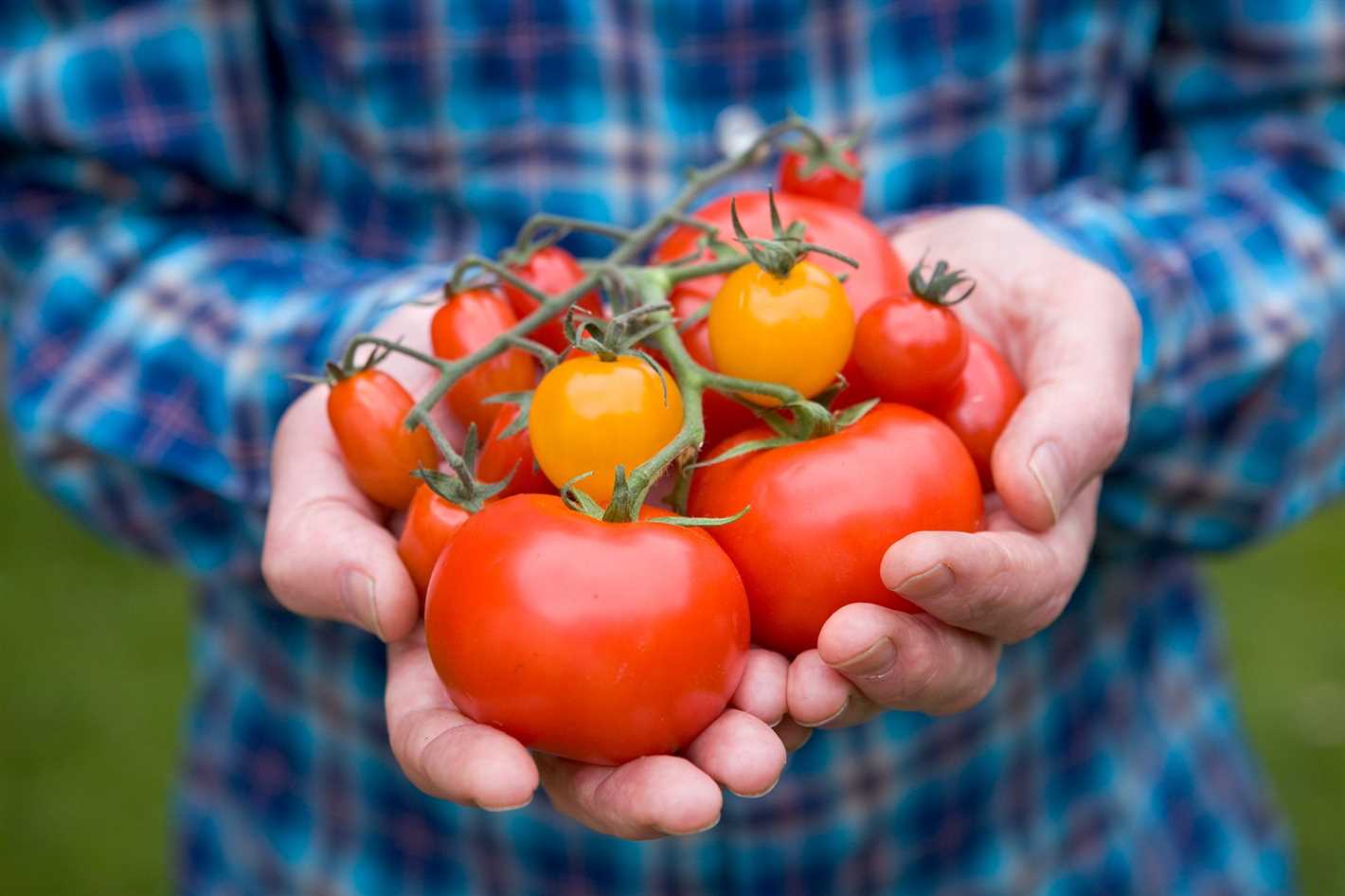
Red tomatoes are ready for harvest when they are firm, fully colored, and have a slight give when gently squeezed. Pick the tomatoes by hand, holding onto the stem and gently twisting to detach them from the plant. It’s best to harvest them when they are fully ripe to ensure the best flavor and taste. Enjoy the fruits of your labor!
Following these planting and caring tips will help you grow healthy and delicious red tomatoes in your garden. With the right care and attention, you’ll be able to enjoy a bountiful harvest of juicy and flavorful tomatoes all season long!
Planting Red Tomatoes in the Garden
Tomatoes are a popular choice for home gardeners due to their delicious taste and versatility in recipes. When planting red tomatoes in the garden, there are a few steps to follow to ensure a successful harvest.
Choosing the Best Tomato Varieties
There are many different varieties of red tomatoes to choose from, each with their own unique flavor and characteristics. Consider the size of the tomatoes you prefer, as well as whether you want to grow standard-sized tomatoes or smaller cherry or grape tomatoes. Some popular red tomato varieties include:
- Beefsteak tomatoes
- Roma tomatoes
- Cherry tomatoes
- Grape tomatoes
Preparing the Soil
Before planting red tomatoes, it’s important to prepare the soil to provide the best growing conditions. Start by choosing a sunny location in your garden, as tomatoes thrive in full sun. Remove any weeds or debris from the area and loosen the soil with a garden fork or tiller. Amend the soil with compost or well-rotted manure to improve its fertility and drainage.
Planting the Tomato Seedlings
When the soil is prepared, it’s time to plant the red tomato seedlings. Dig a hole for each seedling, making sure the hole is deep enough to cover the roots and part of the stem. This encourages the development of a strong root system. Place the seedling in the hole and gently firm the soil around it. Space the seedlings according to the instructions for the specific variety, usually at least 18-24 inches apart.
Caring for Red Tomato Plants
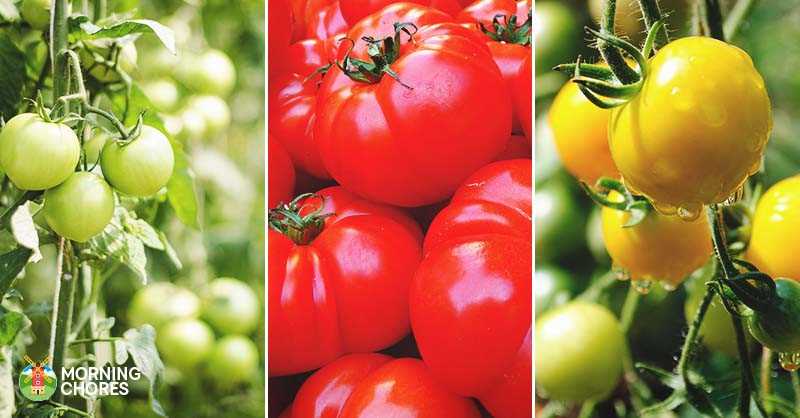
Once the red tomato plants are in the ground, it’s important to provide them with proper care. Water the plants regularly, keeping the soil moist but not waterlogged. Mulch around the base of the plants to help retain moisture and suppress weeds. Stake or cage the plants to provide support as they grow and bear fruit. Prune the plants as needed to promote airflow and prevent diseases.
Harvesting Red Tomatoes
As the red tomatoes ripen, they can be harvested and enjoyed in a variety of dishes. Tomatoes are best when fully ripe and vibrant in color. Gently twist or cut the tomatoes from the plant, being careful not to damage the stem or surrounding fruit. Store the tomatoes at room temperature for optimal flavor.
By following these steps, you can have a bountiful harvest of delicious red tomatoes in your garden. Whether you choose large beefsteak tomatoes or tiny cherry tomatoes, homegrown tomatoes are sure to be a highlight of your summer meals.
Caring for Red Tomatoes
Watering
Tomatoes require consistent moisture to thrive, so it’s important to water them regularly and deeply. Watering should be done at the base of the plants to avoid wetting the foliage, as this can increase the risk of diseases. Make sure the soil is evenly moist but not waterlogged. Drip irrigation is a great option for providing consistent moisture to the plants.
During hot and dry periods, tomatoes may require more frequent watering. Check the soil moisture regularly by sticking your finger about an inch into the ground. If it’s dry at that depth, it’s time to water.
Feeding
Tomatoes are heavy feeders and require regular fertilization to produce healthy fruits. Before planting, incorporate well-composted organic matter into the soil to improve its fertility. Once the tomatoes are established, you can start applying a balanced organic fertilizer every 2-3 weeks. Alternatively, you can use a slow-release fertilizer that provides nutrients gradually over a longer period of time.
When feeding tomatoes, it’s important not to over-fertilize, as this can lead to excessive foliage growth at the expense of fruit production. Follow the instructions on the fertilizer package and adjust the application rate if necessary.
Support
Red tomatoes can grow quite tall and heavy, so providing support is essential to prevent the plants from collapsing. This can be done using stakes, trellises, or cages. Stakes should be inserted into the ground at planting time to avoid damaging the roots later on.
If using cages, place them around the young plants and gently guide the stems through the openings as they grow. Trellises are useful for training the tomato plants upward. Regularly check the plants and adjust the support as necessary.
Pruning
While not essential, pruning can help increase air circulation and reduce the risk of diseases. It can also promote better fruiting by redirecting the plant’s energy to fruit production instead of foliage growth. Pruning involves removing the suckers that grow in the crotch between the main stem and the branches. Use clean and sharp pruners to prevent the spread of pathogens.
When pruning, it’s important not to remove too many leaves, as they are responsible for photosynthesis and provide energy to the plant. Remove only the suckers and any diseased or damaged foliage.
Pest and Disease Control
Tomatoes can be susceptible to various pests and diseases, including aphids, tomato hornworms, and fungal diseases like blight. To prevent and control these problems, regularly inspect the plants for any signs of infestation or disease.
If pests are present, you can try using natural remedies like insecticidal soap or neem oil. For fungal diseases, avoid overhead watering, promote good air circulation, and consider applying organic fungicides if necessary.
It’s also a good practice to remove any fallen leaves or fruits from the ground, as they can harbor diseases and pests. Crop rotation is another effective method to prevent the buildup of pathogens in the soil.
Harvesting and Usage
Once your red tomatoes have ripened on the vine, it’s time to harvest them. The best way to determine if a tomato is ready for harvest is to gently squeeze it. A ripe tomato should feel firm but slightly give under gentle pressure. It should also have a deep, vibrant red color.
Using a pair of sharp scissors or garden shears, carefully cut the stem of the tomato just above the calyx, which is the green, leafy part. Be careful not to damage the tomato or the plant while harvesting.
After harvesting, it’s important to handle the tomatoes with care to avoid bruising or damaging the fruit. Place them gently into a basket or container to prevent any unnecessary harm.
Red tomatoes are incredibly versatile and can be used in a variety of dishes. They are delicious when sliced and added to salads or sandwiches. You can also use them to make a classic tomato soup or pasta sauce. For a refreshing snack, try slicing a red tomato and topping it with mozzarella cheese, basil, and a drizzle of balsamic glaze.
Storing Red Tomatoes
To store freshly harvested red tomatoes, it’s best to keep them at room temperature. Avoid placing them in the refrigerator, as this can cause them to lose their flavor and become mealy.
If you have an abundance of red tomatoes and want to extend their shelf life, you can preserve them by canning or making a tomato sauce. Canned tomatoes can be stored for several months and used in various recipes throughout the year.
Health Benefits
Red tomatoes are not only delicious but also packed with essential nutrients. They are an excellent source of vitamins A and C, as well as antioxidants like lycopene. These nutrients contribute to healthy skin, a strong immune system, and may reduce the risk of certain types of cancers.
In addition, red tomatoes are low in calories and rich in fiber, making them a great choice for those looking to maintain a healthy weight.
How to Harvest Red Tomatoes
Harvesting ripe red tomatoes is an exciting and rewarding process for any gardener. Here are some steps to help you harvest your red tomatoes at the right time and in the best way:
1. Check the color
Before harvesting your tomatoes, make sure they have reached their appropriate color. Red tomatoes should have a deep, vibrant red color. Green or yellow spots on the fruit indicate that it is not yet fully ripe.
2. Give them a gentle squeeze
Lightly squeeze the tomato to check for firmness. Ripe tomatoes should feel slightly soft but still have some resilience. Overly soft or mushy tomatoes are overripe and may not have the best flavor.
3. Twist and pull
To harvest the tomato, gently twist it while tugging at the stem. The tomato should detach easily from the vine. Be careful not to damage the stem or other fruits on the plant.
4. Harvest in the morning
The best time to harvest tomatoes is in the morning when they are cool and have maximum water content. This ensures that the tomatoes stay fresh and flavorful for longer.
5. Handle with care
Tomatoes are delicate fruits, so handle them gently to avoid bruising or crushing. Place them in a basket or a shallow container with enough space to prevent them from being stacked on top of each other.
6. Store properly
Store your harvested tomatoes at room temperature, away from direct sunlight. Alternatively, you can refrigerate them, but this may affect their flavor and texture. Use the ripe tomatoes within a few days to enjoy their best flavor.
Following these steps will help you harvest red tomatoes at their peak of flavor and freshness. Enjoy your homegrown tomatoes in salads, sauces, or simply bite into their juicy goodness!
“Question-Answer”
What are the best red tomato varieties to plant?
The best red tomato varieties to plant are Beefsteak, Roma, and Cherry tomatoes. Beefsteak tomatoes are large, juicy, and perfect for slicing. Roma tomatoes are pear-shaped and great for sauces and canning. Cherry tomatoes are small and sweet, perfect for snacking.
Can you give me more details about Beefsteak tomatoes?
Beefsteak tomatoes are large, meaty, and known for their juicy, rich flavor. They are perfect for slicing and using in sandwiches and salads. Some popular Beefsteak tomato varieties include Big Beef, Brandywine, and Cherokee Purple. They take longer to mature compared to other tomato varieties, but the wait is definitely worth it!
Are Roma tomatoes suitable for making sauces?
Yes, Roma tomatoes are perfect for making sauces. They have a firm texture and less juice, which makes them ideal for cooking down into a thick sauce. Their sweet and tangy flavor adds depth to any sauce recipe. Whether you want to make a classic marinara sauce or a homemade tomato paste, Roma tomatoes are a great choice.
Can Cherry tomatoes be grown in containers?
Yes, Cherry tomatoes are excellent for container gardening. They have a compact growth habit and don’t require much space. You can grow them in small pots or hanging baskets on your balcony or patio. Just make sure to provide them with enough sunlight, water, and support if needed. Cherry tomatoes are one of the easiest tomato varieties to grow in containers.
Do Beefsteak tomatoes require any special care?
Beefsteak tomatoes require proper staking or caging to support their heavy fruits. Since they grow to be quite large, they may need additional support to prevent the branches from breaking under the weight of the tomatoes. Regular pruning and removing suckers can also help direct the plant’s energy towards fruit production. Additionally, Beefsteak tomatoes benefit from consistent watering and fertilizing.
Are there any specific diseases that Roma tomatoes are resistant to?
Yes, Roma tomatoes are known for their resistance to diseases such as Fusarium wilt, Verticillium wilt, and nematodes. This disease resistance makes Roma tomatoes a popular choice for gardeners, as it can help ensure a successful harvest. However, it’s still important to practice good gardening techniques, such as crop rotation and maintaining proper soil health, to prevent any potential diseases.
What are some common uses for Cherry tomatoes?
Cherry tomatoes have a variety of uses in the kitchen. They are perfect for snacking on their own or adding to salads and pasta dishes. Cherry tomatoes can also be roasted, grilled, or used to make a flavorful salsa. Their small size and sweet flavor make them a great addition to appetizers and party platters. Experiment with different cherry tomato recipes to discover your favorite way to enjoy them!







